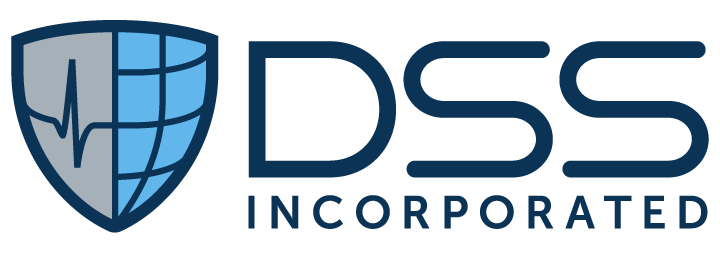Q&A: Addressing the VA Radiology Clinical and Administrative Pain Points for Optimized Workflows
As the Department of Veterans Affairs (VA) seeks to enhance its digital transformation efforts, one of its key focus areas is enhancing and streamlining clinical and administrative workflows in radiology.
For many years, the VA has relied on paper protocols for managing these workflows, which can result in scheduling delays and the possibility for human errors. This is why DSS created Order Tracking Manager (OTM) for Radiology, a web-based, VistA-Integrated solution that leverages real-time data for providing clear oversight and task management for staff and administrators.
In the following Q&A, Ricky DeLeon, project manager at DSS, discusses how OTM Radiology provides better visibility into Veteran care, helps avoid patient care delays, reduces administrative burdens, and supports the VA on its journey to being a High Reliability Organization (HRO).
The following has been edited for length and clarity.
Q: Before we dive in, can you tell us about the pain points and challenges that the VA faces when it comes to achieving streamlined clinical and administrative workflows to radiology?
Ricky: One of the major challenges the VA faces in streamlining both clinical and administrative workflows for radiology is dealing with paper-based protocols and overbooking issues.
Paper protocols are often misplaced or lost, leading to delays in scheduling. This means Medical Support Assistants (MSAs) may need to contact radiologists directly, wait for protocols to be printed at designated printers, or retrieve them at specific times. These inefficiencies can cause scheduling delays.
In addition, many Veterans travel long distances or require transportation assistance, which often results in multiple appointments being scheduled at different clinics on the same day. Overbooking can lead to extended wait times, and in some cases, appointments need to be canceled or rescheduled. This, in turn, can delay treatment or completion of exams, making it challenging to meet clinically indicated deadlines.
Q: Please tell us about DSS’ Order Tracking Manager (OTM) for Radiology and how it can help address these challenges.
Ricky: OTM Radiology offers electronic protocoling with unique filters that help identify which exams require protocols and which have already been protocoled. This system provides clear visibility into the status of protocols, allowing Medical Support Assistants (MSAs) to schedule appointments more efficiently.
Additionally, OTM has reporting capabilities that capture who completed the protocol, along with the date and time of completion. It also allows radiologists to create progress notes for protocols and includes a filter to identify protocols that require such notes. Radiologists can then batch-sign or choose which protocols to sign as needed.
Another key feature of OTM is that it displays all clinical appointments for the scheduled day and beyond. This helps MSAs avoid overbooking appointments for the same date and time.
Q: Please share some more insights around the two defined worklists that (i.e., Critical Code Worklist and Exams Worklist) further address these challenges.
Ricky: Radiologists must notify ordering providers of critical results so veterans can receive timely treatment. They reference the time of notification and use their discretion to prioritize these notifications. OTM Radiology supports this process with a real-time view of diagnostic imaging results, using its reports worklist to highlight critical codes.
OTM Radiology uses color-coded filters to prioritize results. For example, monitor codes are displayed in yellow to indicate report orders that contain critical information requiring close attention. The exam worklist is designed to simplify the management of radiology exams, offering a centralized place for radiologists and providers to view radiology orders and enter protocol information.
MSAs can use the application to access protocols, schedule exams, complete registration, and track canceled or missed exams. OTM Radiology ensures compliance with VA directives and streamlines the entire process.
Q: From a high-level perspective, how does OTM Radiology provide better visibility into Veteran care, and ultimately improve care outcomes?
Ricky: OTM Radiology enhances visibility into a Veteran's care by providing real-time access to radiology results through an easy-to-use interface integrated with VistA and CPRS. The system supports bi-directional data flow, allowing seamless communication between platforms.
With OTM Radiology, reviewing results and managing follow-ups is streamlined, keeping radiology staff and providers coordinated with the next steps. The system reduces the need to navigate multiple platforms, allowing clinicians to spend more time focusing on Veterans' care.
Q: Finally, how does OTM Radiology support the VA’s journey to becoming a High Reliability Organization (HRO)?
Ricky: High reliability is built on principles that foster a culture of safety, where decisions prioritize patient safety above all else. OTM Radiology enables radiologists, techs, and MSAs to communicate effectively, ensuring the best clinical decisions are made for optimal patient outcomes.
Radiology departments benefit from valuing specialized knowledge, and OTM Radiology provides a platform for clinicians to share their expertise through comments as they complete workflows. This aligns with the application's key features. Additionally, OTM Radiology tracks user actions, allowing for the review of errors or near misses, and enabling the implementation of quality measures to prevent future occurrences.
OTM Radiology is an example of a solution that fully supports the VA's journey toward becoming a high-reliability organization, keeping veterans at the center of care.
We would like to thank Ricky for sharing his insights with us! To learn more about OTM Radiology, please click here.

